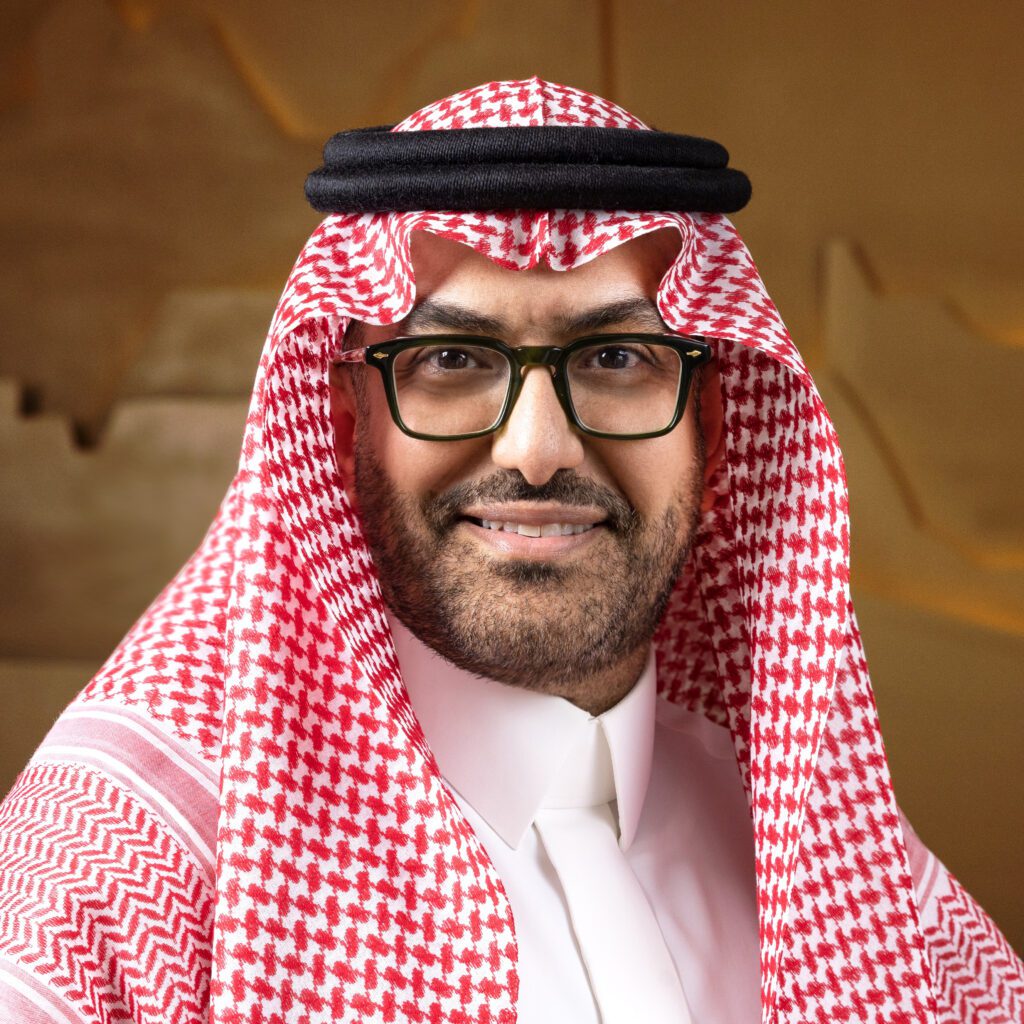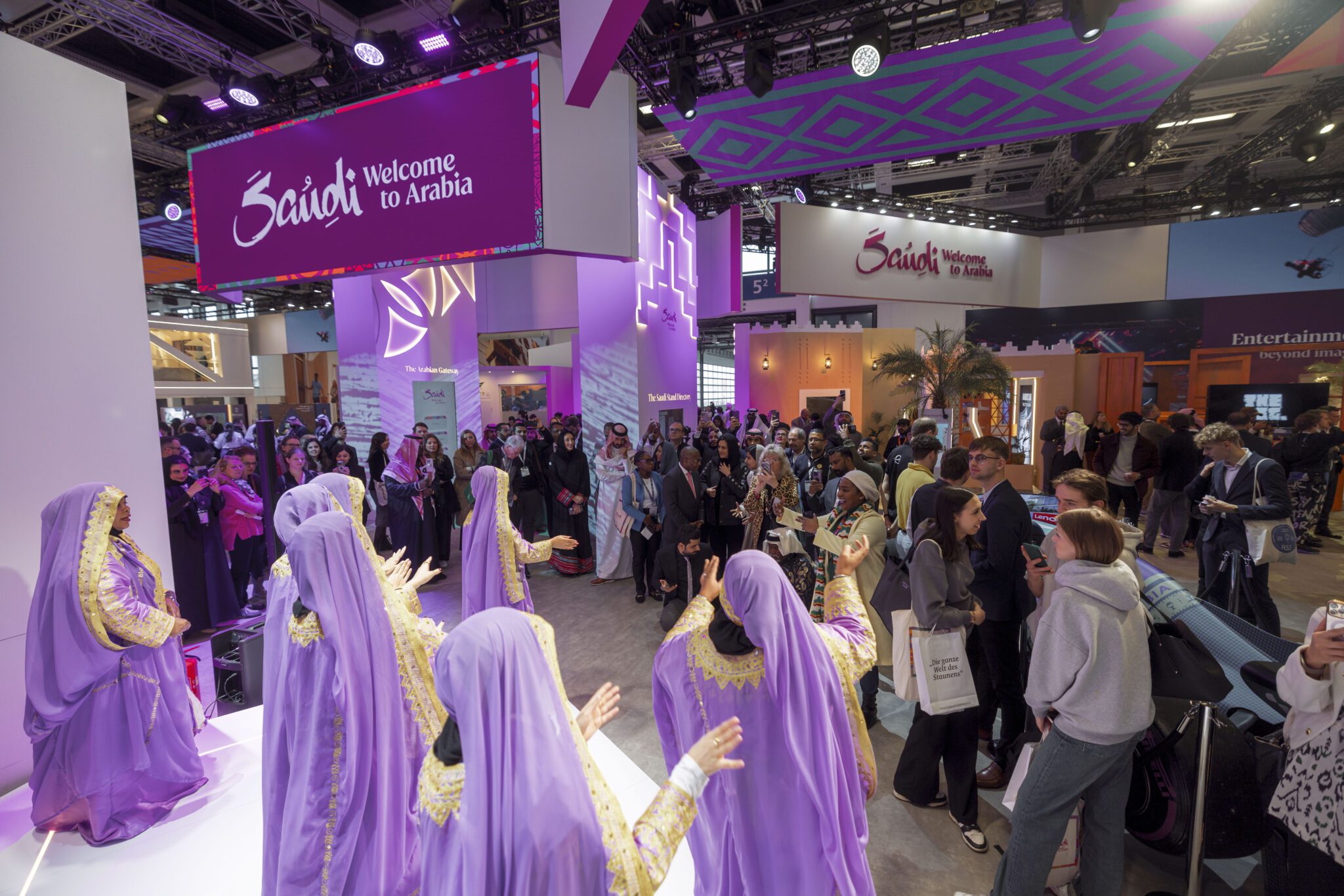Skift Take
Saudi Arabia is trying to change the negative perceptions held by some international tourists.
In Saudi Arabia’s latest tourism campaign, Argentine soccer star Lionel Messi aims to bust the stereotypes global travelers may have about the kingdom. The campaign emphasizes that Saudi Arabia has a lot to offer and is a welcoming destination, said Fahd Hamidaddin, CEO of the Saudi Tourism Authority.
Saudi has been hyperfocused on cutting its dependence on oil and diversifying its economy. Over the next 10 years, the country plans to invest $1 trillion in its tourism sector and wants to become a global tourist destination.
Hamidaddin spoke with Skift at the ITB Berlin travel trade show last week about growth from European travelers, how the $25 million Messi marketing campaign performed, the kingdom’s dependence on tour operators, and more.
This interview has been edited for clarity and length.
Growth in Tourism to Saudi Arabia
Skift: How much has tourism to Saudi grown over the last few years? How much has it grown from Europe?
Hamidaddin: In the grand scheme of things, Saudi is simply growing in all markets, all its new destinations. And we’re not starting from scratch. Saudi Arabia receives a lot of inbound travelers for religious travel to Mecca and Medina, so we’re starting on a high base. We have a lot of inbound for business travel. We have a lot of inbound for visits, friends and family.
With a very high base, going at the highest speed of growth five years in a row, that’s definitely a good testament.
We had set a target of a hundred million visits by 2030. Thankfully, we exceeded that a lot earlier. Now we have a new target, 150 million by 2030. [Saudi Arabia’s tourism minister has previously said that would break down as 80 million domestic travelers and 70 million from international destinations.
From Europe, we grew by 67% last year. [Saudi welcomed over 1 million European travelers, officials told Skift. About 775,000 visitors came for leisure.]
Last year, we launched around 20 routes [by air]. This year we’re launching an additional 10 routes to Europe.
Our destinations are opening one resort after the other on a weekly basis. There’s a new opening every week in different cities in Saudi. So we are very bullish when it comes to investment.
And we can’t be but bullish in generating demand, meaning, if you’re doing all the supply and you’re investing $800 billion in creating, offering and developing destinations, you want to make sure you equally invest in demand.
The Lionel Messi Campaign
Skift: Saudi Arabia recently launched a “Go Beyond What You Think” tourism campaign featuring Lionel Messi. What struck me was how explicit the campaign was. Messi literally kicked the ball at some criticisms I’ve heard about Saudi Arabia.
Hamidaddin: It’s true. Mark Twain said travel is fatal for prejudice, and that was the starting point. And we talked to UN tourism, and they launched the Tourism Opens Minds campaign. We wanted to collaborate and do the same.
This is a conversation that the world needs. It’s not just Saudi. Prejudice and preconceptions are available about so many destinations. Promoting new destinations immediately comes with certain perceptions.
Saudi launched this campaign and audiences liked it. While the finer results have not been measured, the initial readings tell us that this has performed better than all the campaigns that we formed. We’ve launched nearly 10. People watched that campaign to the end. The view-to-completion rate was 40% higher than the best other campaign that we did.
There will be new campaigns and new stars, new stars because every day we get a new star moving into Saudi. Messi did not move, but others did. Let’s hear from the insiders that actually made it.
Skift: How does the Lionel Messi ad fit into your overall marketing strategy?
Hamidaddin: We need to make sure that people are aware, excited about our offering, and comforted about what the reality is about Saudi.
All those preconceptions that people may have had, such as that maybe women wouldn’t feel safe being alone. We can respond by noting, for example, InsureMyTrip’s index, which comes out of India, rated the safety of destinations for all their travelers and trade partners. They included Saudi in their index last year, and we scored in one of our cities, the safest city for women, for women alone after midnight.
We’ve been telling the world that this is the home of the Arabian Wonders, from UNESCO heritage sites to civilizations that have passed through this land.
We’re also building a lot of activations and events like no other place in the world. Last year, we had 11,000 events executed.
We are launching our prime offering on the Red Sea. “Sun and sea” is one of the biggest attraction magnets for Europe, and Saudi is going big on that now, but it’s no longer talk. It’s a reality. Red Sea Global launched the St. Regis Resort, the Six Senses Resort, and another Ritz-Carlton is opening. Next year, we’re expecting eight more resorts. Sindalah in NEOM is launching its first island. It’s going to be second to none.

How to Attract U.S. Travelers
Skift: What do you think will have the biggest draw on travel from the U.S.?
Hamidaddin: The longer the distance, the more segmented you need to be.
People usually fly long distances for sun and sea, especially romantic getaways or cultural exploration. Arabia has a lot of mystique.
Disney is a machine that has been talking about Aladdin and the land of Arabia, and this land is here. Lawrence Arabia came as a movie. And so Arabia does land with a positive intrigue and mystic appeal to the American segments.
And we’ve been seeing interest, especially amongst luxury travelers and cultural travelers. With our sun and sea offering expanding, I will see “sun and sea” becoming probably one of our biggest drivers of travel from the U.S.
The Importance of Travel Partners
Skift: What are you doing to bring in international tour operators?
Hamidaddin: We could not have grown without our travel partners. Usually, new destinations rely heavily on travel partners because, until a destination is very well known and people recommend it to one another, people won’t necessarily just book and jump. They need their tours to be pre-planned and arranged with travel agencies and groups.
We develop itineraries, and most of our business in new developing markets like Europe, America, and Asia are happening through our partners.
Our partners have different segments. Some are individual travelers, and some are group travelers. This year for the first time, we launched our transportation map, which takes connectivity to the next level. It’s air connectivity, it’s ground transport for groups and individuals. And we are introducing our solutions and our partners on transportation for our travel agents around the world because there is high demand now for groups.
For example, we just partnered with a company called Shift Transit. Shift, has an asset pool of vehicles that they provide all the destination management companies [DMCs] in terms of buses, minivans, small vehicles, four-by-fours, you name it, just to supply the DMCs that don’t have these assets at any point in time to cater for their travelers, be it individuals, families, or groups.
Sports and Music as Growth Drivers
Skift: Shed some color on your festival and event calendar.
Hamidaddin: We’re looking at sports as a socioeconomic engine from opportunities to wealth to a sector that would become an engine of growth for the country. Everything is coming from a massive strategic direction to unlock the opportunities and the jobs and the careers and definitely the economic stimulation.
Sports are expected to contribute 1.5% to our total GDP. And so it’s serious, especially in a country that has always been dependent on oil. 1.5% is significant. Now, with that comes a development of clubs hosting international events, and we’ve put a bid for the World Cup, and fingers crossed, we’ll win it.
We had the Formula One Grand Prix. Two months ago, we launched with Rafael Nadal the Nadal Tennis Academy to drive aspiration to this sector. We’ve been hosting a lot of boxing. Matches never done anywhere in the world are now taking place in Saudi. NEOM is now developing our ski destination and has already been granted the right to host the Asian Winter Games in ’29.
So for golf, we had the LIV Golf and the partnership with the PGA tour. That aggressive commitment that we have put to passion players in the space of golf tells you that this is not random.
We are very proud of our original music and folklore dance, and we are investing heavily in reviving that. We’re hosting international concerts and music associations and institutes to come and perform. Today in ITB, we brought the first Saudi women female dance groups.
We pair Saudi orchestras with other international orchestras, or we simply invite international DJs and we mix them with local talents on the rise. The largest EDM music festival, the MDLBeast, similar to TomorrowLand.
SoundStorm is the largest EDM festival that happens in the world when it comes to numbers. Last year we had 630,000 attendees. It’s a city, and it’s a festival that runs for three days in a row.
The Daily Newsletter
Our daily coverage of the global travel industry. Written by editors and analysts from across Skift’s brands.
Have a confidential tip for Skift? Get in touch
Tags: middle east, saudi, saudi arabia, saudi news, Saudi Tourism, Saudi Vision 2030, tourism

